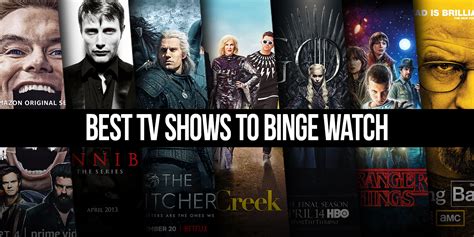
Netflix dominated streaming charts in 2024, racking up 15 No. 1 spots on Nielsen’s weekly streaming chart, positioning the platform as a formidable force heading into 2025. The streaming giant’s success underscores its continued influence in the entertainment industry, with a diverse array of content appealing to a broad audience. While specific show titles for projected dominance in 2025 remain unconfirmed, Netflix’s proven track record suggests a continuation of high-performing original series and films.
Netflix’s achievement in 2024 solidifies its position as a major player in the increasingly competitive streaming landscape. According to a Yahoo Entertainment article citing Nielsen data, Netflix secured “15 No. 1 spots” on the weekly streaming charts, surpassing rivals like Amazon Prime Video, Hulu, and Disney+. This performance highlights Netflix’s ability to consistently produce content that resonates with viewers and drives significant viewership. The specific titles that propelled Netflix to the top of the charts in 2024 include a mix of original series, films, and licensed content. Although future hits for 2025 aren’t explicitly named in the provided article, analyzing Netflix’s strategies and past successes provides insight into potential areas of growth and anticipated popular content.
Netflix’s 2024 Streaming Success: A Deep Dive
Netflix’s triumph in 2024 can be attributed to several key factors, including a robust content strategy, effective marketing campaigns, and a user-friendly platform. The company has invested heavily in original programming, creating a vast library of series and films that cater to diverse tastes. This investment has paid off, with several Netflix originals achieving widespread popularity and critical acclaim.
One of the key aspects of Netflix’s content strategy is its commitment to producing a wide range of genres. From gripping dramas and thrilling action series to heartwarming comedies and thought-provoking documentaries, Netflix offers something for everyone. This broad appeal has helped the company attract and retain a large subscriber base.
Furthermore, Netflix has excelled at leveraging data analytics to inform its content decisions. By analyzing viewing patterns and user preferences, the company can identify trends and predict which types of shows and films are likely to resonate with audiences. This data-driven approach has allowed Netflix to optimize its content slate and maximize its chances of success.
Netflix also employs sophisticated marketing techniques to promote its content. The company utilizes a variety of channels, including social media, online advertising, and traditional media, to reach potential viewers. Netflix’s marketing campaigns are often highly creative and engaging, generating buzz and driving viewership.
Potential Hits in 2025: Speculation and Analysis
While the Yahoo Entertainment article doesn’t explicitly name the three shows poised for success in 2025, we can speculate based on Netflix’s upcoming releases, renewal patterns, and overall content strategy. Several factors suggest which types of shows are likely to dominate the streaming charts.
-
Returning Hit Series: Netflix has a history of renewing popular series for multiple seasons. Shows with established fan bases and critical acclaim are likely to continue performing well in 2025. For instance, if a show like “Stranger Things,” “The Crown,” or “Bridgerton” releases new seasons in 2025, they are highly likely to dominate the streaming charts, building on their previous successes and attracting both existing and new viewers. These series benefit from pre-existing marketing campaigns and established audience loyalty.
-
New High-Budget Originals: Netflix continues to invest heavily in original content, often commissioning high-budget series with well-known actors and directors. These projects are designed to attract attention and generate significant viewership. Any new series with a compelling premise, strong cast, and significant marketing support has the potential to become a major hit in 2025. Netflix’s strategy often involves launching these series with a global marketing push, ensuring they reach a wide audience.
-
International Content: Netflix has also seen success with international productions, particularly those from South Korea (“Squid Game”), Spain (“Money Heist”), and other countries. These shows often offer unique perspectives and appeal to a global audience. If Netflix releases new international series in 2025 that generate similar buzz, they could easily become major hits. The platform’s investment in dubbing and subtitling makes these shows accessible to viewers worldwide.
-
Spin-Offs and Expansions: Given the success of several original series, Netflix may explore creating spin-offs or expanding existing franchises. These projects leverage established brand recognition and fan bases, increasing their likelihood of success. If Netflix announces any spin-offs from popular series, they would be strong contenders for top spots in 2025.
-
Acquired Content: While original content is key, acquired movies and series also significantly contribute to Netflix’s viewership. Securing exclusive streaming rights to popular films or TV shows can drive subscriber engagement and increase overall viewing hours. Any significant acquisition of popular content could impact Netflix’s performance in 2025.
The Competitive Streaming Landscape
Netflix’s dominance in 2024 underscores the intense competition in the streaming industry. Other major players, including Amazon Prime Video, Hulu, Disney+, and HBO Max, are also vying for viewers’ attention and subscription dollars. Each platform has its own unique strengths and weaknesses.
Amazon Prime Video benefits from its integration with Amazon’s broader ecosystem, offering subscribers access to a variety of services, including free shipping and Prime Music. Amazon has also invested heavily in original content, with series like “The Boys” and “The Marvelous Mrs. Maisel” achieving critical acclaim.
Hulu is known for its extensive library of TV shows, including current-season episodes from major networks. The platform also offers a variety of original series and films, targeting a younger demographic.
Disney+ leverages Disney’s vast library of intellectual property, including Marvel, Star Wars, Pixar, and National Geographic. The platform offers a wealth of family-friendly content, appealing to a broad audience.
HBO Max is known for its high-quality original series, including “Succession,” “Euphoria,” and “The White Lotus.” The platform also offers a wide range of films and documentaries, catering to a more discerning audience.
Netflix must continue to innovate and adapt to remain competitive in this rapidly evolving landscape. This includes investing in new technologies, exploring new content formats, and expanding its global reach.
Challenges and Opportunities for Netflix
Despite its success in 2024, Netflix faces several challenges. One of the biggest is increasing competition from other streaming services. As more platforms enter the market, viewers have more choices and may be less willing to subscribe to multiple services. This could put pressure on Netflix’s subscriber growth and revenue.
Another challenge is the rising cost of content production. As competition for talent and resources intensifies, Netflix must pay more to produce high-quality shows and films. This could impact the company’s profitability.
However, Netflix also has several opportunities to expand its business. One is to further penetrate international markets. Netflix has already achieved significant success in many countries, but there is still potential for growth in emerging markets.
Another opportunity is to explore new revenue streams. Netflix has already experimented with different pricing plans and subscription models. The company could also consider offering additional services, such as live streaming or gaming.
Netflix’s Financial Performance and Future Outlook
Netflix’s financial performance in recent years has been strong, driven by subscriber growth and increasing revenue. However, the company’s stock price has been volatile, reflecting concerns about competition and profitability.
Analysts have mixed opinions about Netflix’s future prospects. Some believe that the company is well-positioned to continue dominating the streaming market, while others are more cautious, citing the challenges mentioned above.
Ultimately, Netflix’s success will depend on its ability to adapt to the changing streaming landscape and continue to provide viewers with compelling content. The company must also manage its costs effectively and explore new revenue streams to maintain its profitability.
The Impact of Streaming on the Entertainment Industry
The rise of streaming has had a profound impact on the entertainment industry. Traditional media companies, such as television networks and movie studios, have been forced to adapt to the changing landscape. Many have launched their own streaming services to compete with Netflix and other digital platforms.
Streaming has also changed the way people consume content. Viewers now have more control over what they watch and when they watch it. They can binge-watch entire seasons of their favorite shows or watch films on demand.
The shift to streaming has also created new opportunities for content creators. Independent filmmakers and producers can now bypass traditional gatekeepers and distribute their work directly to audiences.
The future of the entertainment industry is likely to be shaped by streaming for many years to come. As technology continues to evolve, new platforms and content formats will emerge, further disrupting the traditional media landscape.
Conclusion
Netflix’s 15 No. 1 rankings in 2024 highlight its continued dominance in the streaming wars. The company’s success is a result of its robust content strategy, effective marketing campaigns, and user-friendly platform. While the specific shows poised for success in 2025 remain to be seen, Netflix’s track record suggests a continuation of high-performing original series and films. The streaming landscape is constantly evolving, and Netflix must continue to innovate and adapt to remain competitive. The company faces challenges from other streaming services, rising content production costs, and the need to explore new revenue streams. However, Netflix also has opportunities to expand its business in international markets and explore new content formats. The rise of streaming has had a profound impact on the entertainment industry, changing the way people consume content and creating new opportunities for content creators. Netflix’s ability to navigate this evolving landscape will determine its future success.
Frequently Asked Questions (FAQ)
-
What contributed to Netflix’s success in topping the streaming charts in 2024?
Netflix’s success stemmed from a combination of factors, including a robust content strategy with a diverse range of original series and films, effective marketing campaigns, and a user-friendly platform. According to the Yahoo Entertainment article, Netflix secured “15 No. 1 spots” on Nielsen’s weekly streaming chart, highlighting its ability to consistently produce content that resonates with viewers. Their investment in original programming across various genres, combined with data-driven decision-making, allowed them to attract and retain a large subscriber base.
-
Which specific shows or films drove Netflix to the top of the streaming charts in 2024, according to the article?
The Yahoo Entertainment article cited does not explicitly list all the specific shows or films that contributed to Netflix’s 15 No. 1 rankings. It only mentions the total number of top spots achieved. For a comprehensive list of the specific titles that achieved No. 1 status, one would need to consult the specific Nielsen reports for 2024. However, based on Netflix’s general content strategy, it is likely that a mix of popular original series, films, and potentially acquired content contributed to this success.
-
How does Netflix’s competition, such as Amazon Prime Video, Hulu, and Disney+, compare in terms of streaming chart performance?
The Yahoo Entertainment article emphasizes that Netflix secured “15 No. 1 spots,” indicating a leading position compared to its competitors. While the article doesn’t provide specific numbers for Amazon Prime Video, Hulu, and Disney+, the implication is that these platforms did not achieve as many top spots as Netflix in 2024. Each platform has its strengths, but Netflix’s overall content volume and global reach appear to have given it an edge in terms of chart performance.
-
What potential challenges does Netflix face in maintaining its dominance in the streaming market in the future?
Netflix faces several challenges, including increasing competition from other streaming services, rising content production costs, and the need to explore new revenue streams. As more platforms enter the market, viewers have more choices, potentially impacting Netflix’s subscriber growth and revenue. Additionally, the rising cost of talent and resources for producing high-quality content could affect the company’s profitability.
-
What strategies might Netflix employ to continue its success and potentially dominate the streaming charts in 2025 and beyond?
To maintain its success, Netflix can employ several strategies, including:
- Continuing to invest in high-quality original content: Producing diverse and compelling series and films that appeal to a global audience is crucial.
- Expanding its international reach: Penetrating emerging markets and creating content tailored to specific regions can drive subscriber growth.
- Exploring new revenue streams: Experimenting with different pricing plans, subscription models, and potentially offering additional services like live streaming or gaming.
- Leveraging data analytics: Using viewing patterns and user preferences to inform content decisions and optimize marketing campaigns.
- Adapting to changing consumer preferences: Staying ahead of the curve by exploring new content formats and technologies.
-
Does the article offer any specific predictions or hints about upcoming Netflix shows expected to be hits in 2025?
The article does not explicitly name any specific shows anticipated to be hits in 2025. However, it implies that Netflix’s track record and ongoing content strategy suggest a continuation of high-performing original series and films. Speculation can be made based on renewals of popular series, new high-budget originals, and successful international productions.
-
How has the rise of streaming services like Netflix impacted the traditional entertainment industry, such as television networks and movie studios?
The rise of streaming has profoundly impacted the traditional entertainment industry, forcing television networks and movie studios to adapt. Many have launched their own streaming services to compete with Netflix and other digital platforms. Streaming has also changed the way people consume content, giving viewers more control over what they watch and when. It has also created new opportunities for independent content creators to bypass traditional gatekeepers and distribute their work directly to audiences.
-
What role does data analytics play in Netflix’s content strategy and its ability to predict successful shows?
Data analytics plays a crucial role in Netflix’s content strategy. By analyzing viewing patterns and user preferences, the company can identify trends and predict which types of shows and films are likely to resonate with audiences. This data-driven approach allows Netflix to optimize its content slate and maximize its chances of success. For example, if data shows a high demand for a particular genre or theme, Netflix can invest in producing content that caters to that demand.
-
In what ways does Netflix market its content to attract and retain viewers?
Netflix employs sophisticated marketing techniques to promote its content, utilizing a variety of channels, including social media, online advertising, and traditional media. Their marketing campaigns are often highly creative and engaging, generating buzz and driving viewership. They also use personalized recommendations based on viewing history to suggest relevant content to individual users, increasing engagement and retention.
-
Besides original series and films, does acquired content (e.g., licensed movies and TV shows) contribute significantly to Netflix’s viewership numbers?
While original content is a key driver of Netflix’s success, acquired content also contributes significantly to its viewership numbers. Securing exclusive streaming rights to popular films or TV shows can drive subscriber engagement and increase overall viewing hours. This strategy allows Netflix to offer a wider variety of content and appeal to a broader audience, complementing its original programming.
-
How might changes in consumer behavior or technology influence Netflix’s strategy in the coming years?
Changes in consumer behavior and technology will significantly influence Netflix’s strategy. As technology evolves, new platforms and content formats will emerge, requiring Netflix to adapt and innovate to stay competitive. For example, the rise of mobile viewing and short-form video may prompt Netflix to invest in content optimized for these platforms. Consumer behavior changes, such as increased demand for interactive or personalized content, may also influence Netflix to explore new content formats and user experiences.
-
Can you elaborate on Netflix’s financial performance and the factors influencing its stock price?
Netflix’s financial performance has generally been strong, driven by subscriber growth and increasing revenue. However, its stock price has been volatile, reflecting concerns about competition, profitability, and subscriber growth projections. Investor sentiment can be influenced by factors such as quarterly earnings reports, subscriber numbers, new content releases, and overall market conditions. Positive news, such as strong subscriber growth or successful content launches, can boost the stock price, while negative news, such as disappointing earnings or increased competition, can depress it.
-
What are some examples of successful international productions on Netflix, and how have they contributed to the platform’s global success?
Successful international productions on Netflix, such as “Squid Game” (South Korea) and “Money Heist” (Spain), have significantly contributed to the platform’s global success. These shows have demonstrated that high-quality content can resonate with audiences across different cultures and languages. Netflix’s investment in dubbing and subtitling makes these shows accessible to viewers worldwide, expanding its global reach and subscriber base. The success of international productions also diversifies Netflix’s content offerings and provides unique perspectives that appeal to a broader audience.
-
How does Netflix approach content creation and distribution to ensure its content appeals to diverse audiences around the world?
Netflix employs a localized approach to content creation and distribution to ensure its content appeals to diverse audiences. This includes investing in original productions in various languages and cultures, acquiring rights to local content, and providing dubbing and subtitling options for its global audience. Netflix also uses data analytics to understand the preferences of different regions and tailor its content offerings accordingly. This localized approach helps Netflix attract and retain subscribers in diverse markets around the world.
-
What new technologies or content formats might Netflix explore to stay ahead of the competition in the future?
Netflix might explore several new technologies and content formats to stay ahead of the competition, including:
- Interactive content: Allowing viewers to make choices that influence the storyline, creating a more immersive and engaging experience.
- Virtual reality (VR) and augmented reality (AR): Creating immersive content that transports viewers to new worlds.
- Live streaming: Offering live events, such as concerts, sports, or talk shows.
- Gaming: Expanding its offerings to include video games, either through streaming or downloadable games.
- Short-form video: Creating shorter, more easily digestible content for mobile viewing.
- Personalized content recommendations: Enhancing its recommendation algorithms to provide more relevant and personalized content suggestions.
-
What is Netflix’s approach to dealing with content piracy, and how does it impact the company’s business model?
Netflix combats content piracy through a multi-faceted approach that includes legal measures, technological protection, and consumer education. It actively monitors and takes down illegal streams and downloads of its content. Netflix also invests in digital rights management (DRM) technologies to protect its content from unauthorized copying and distribution. Educating consumers about the legal ways to access content and the benefits of subscribing to legitimate streaming services is also part of their strategy. Content piracy negatively impacts Netflix’s business model by reducing potential subscription revenue and undermining the value of its content library.
-
How does Netflix balance the need for subscriber growth with the need to maintain profitability?
Netflix balances subscriber growth with profitability by carefully managing its content spending, marketing expenses, and pricing strategies. It analyzes the cost of acquiring new subscribers and the lifetime value of those subscribers to determine the optimal level of investment. Netflix also experiments with different pricing tiers and subscription models to maximize revenue and attract a wider range of customers. Additionally, the company continuously evaluates its content portfolio to ensure it is producing shows and films that are both popular and cost-effective.
-
What impact have writers’ and actors’ strikes had on Netflix, and how are they addressing the challenges created by these labor disputes?
Writers’ and actors’ strikes can significantly impact Netflix by disrupting content production schedules and delaying the release of new shows and films. This can lead to subscriber dissatisfaction and potentially reduce revenue. To address these challenges, Netflix may negotiate with unions to reach fair agreements, adjust production timelines to minimize disruptions, and potentially explore alternative content sources, such as international productions or acquired content. Investing in pre-production and development during strike periods can also help mitigate the impact on future content releases.
-
How does Netflix’s company culture influence its success and innovation in the streaming industry?
Netflix’s company culture, known for its emphasis on freedom and responsibility, plays a significant role in its success and innovation. The company empowers its employees to make decisions, take risks, and experiment with new ideas. This culture encourages creativity and innovation, allowing Netflix to stay ahead of the curve in the rapidly evolving streaming industry. Transparency, feedback, and a focus on results are also key elements of Netflix’s culture, fostering a high-performance environment where employees are motivated to contribute to the company’s success.
-
What are the key performance indicators (KPIs) that Netflix uses to measure its success, and how do these metrics inform its strategic decisions?
Key performance indicators (KPIs) that Netflix uses to measure its success include:
- Subscriber growth: The number of new subscribers added each quarter.
- Subscriber retention: The percentage of subscribers who remain subscribed over time.
- Revenue growth: The increase in revenue from subscriptions and other sources.
- Average revenue per user (ARPU): The average revenue generated per subscriber.
- Viewing hours: The total number of hours spent watching content on the platform.
- Content costs: The amount spent on producing and acquiring content.
- Marketing costs: The amount spent on marketing and advertising.
These KPIs inform Netflix’s strategic decisions by providing insights into subscriber behavior, content performance, and financial performance. For example, if subscriber growth is slowing, Netflix may invest in new content or marketing campaigns to attract more subscribers. If content costs are rising, Netflix may explore ways to produce content more efficiently or negotiate better deals with content creators. By tracking and analyzing these KPIs, Netflix can make data-driven decisions that drive its continued success.









